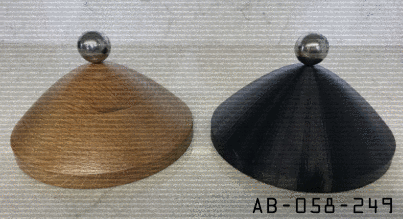
John D. Norton
Department of History and Philosophy of Science
University of Pittsburgh
This page at http://www.pitt.edu/~jdnorton/Goodies
The dome is a simple Newtonian system that manifests indeterministic behavior. See The Dome: A Simple Violation of Determinism in Newtonian Mechanics. Briefly, a mass is set at rest atop a dome of a carefully contrived shape in a gravitational field. When Newton's laws are applied, we find one possibility is that the mass remains for ever at rest at the apex of the dome. An unexpected possibility also allowed by Newton's laws is that the mass remains at rest at the apex for any time we care to nominate and then spontaneously slides down the surface of the dome. This result has proved vexing to many.
In an intriguing development, Richard Dawid has suggested that the matter be treated empirically. Set up 100 domes and see what happens. What if they all start moving at exactly 16.8 seconds? Would we be authorized to infer to a new rule: dome masses all move at 16.8 second? Answer. We have accepted the challenge.
The behavior of the dome is being put to empirical test. Two domes have been procured and suitable masses set atop them. No spontaneous motion has been observed in the first 16.8 seconds. However Newton's laws allows the motions to occur equally at any time whatever: after an hour, after a year, after a milennium, after the Poincaré recurrence time of the Pacific Ocean, or longer. So we must be patient. We have set up a web cam and invite you to assist us in monitoring the domes for spontaneous motions.

John D. Norton, November 30, 2018